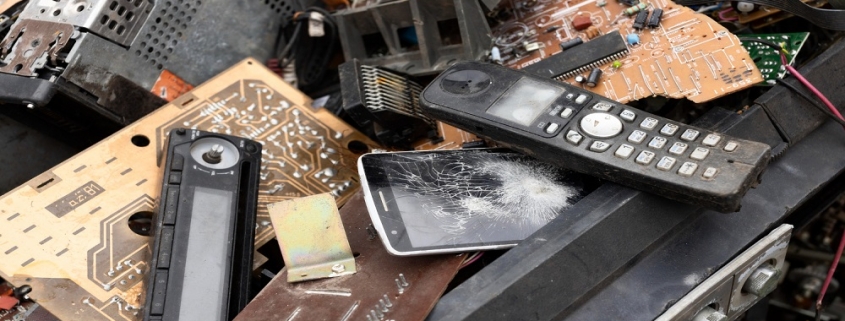Electronic Waste (E-Waste) Management Market is expected to grow at a healthy CAGR
Knowledge Sourcing Intelligence releases the publication of a new analysis report on the market “Global Electronic Waste Management Market – which is projected from 2020 to 2027”.
E-waste is also known as urban mining. It is the process of separating the components of electronic trash for recovery or resale. The corporation is also helped by the strict standards created by some organizations for the recycling of e-waste. Moreover, there is a rising demand for effective scrap management strategies due to the increased risk of health concerns such as kidney problems, bronchitis, and Wilson’s disease caused by improper disposal of hazardous compounds from electronic trash and combustion. Because rich metals such as gold, gold, platinum, and gallium are easily available, recycling electronic trash is an attractive and sensible choice. There is a possibility that such components will stimulate market expansion.
As per the report, the market for Global Electronic Waste Management Market is anticipated to rise at a steady pace.
The reduced longevity of electrical, digital, and consumer electronics items is the key driver of market growth. Another aspect driving industrial growth is the need to adopt advanced technologies. The most significant impediment is that many parts of the world lack adequate e-waste management systems.
Furthermore, governments and institutions have established a variety of projects to halt the production of e-waste. For instance, the International Telecommunication Union (ITU), the Sustainable Cycles (SCYCLE) Programme, which is currently co-hosted by the United Nations University (UNU) and the United Nations Institute for Training and Research (UNITAR), and the International Solid Waste Association collaborated to create the Global E-waste Monitor (ISWA). According to the International Telecommunication Union (ITU), a record 53.6 million metric tonnes (Mt) of e-waste – abandoned devices with a battery or plug, such as computers and mobiles – was created globally in 2019, an increase of 9.2 Mt in five years. The ITU has a practical and relevant to e-waste regulation and policy development, via which Member States can request technical help and capacity-gaining support from the ITU. The ITU Member States also established a goal of increasing the number of nations having e-waste laws to 50%, or 97 countries, by 2023.
Based on material recovery, the global electronic waste management market is classified into plastic, glass, metal, and others. The metal segment is expected to dominate the market during the forecasted period. The amount of electronic garbage has soared due to major developments in the electric and electronic sectors and recycling and burning of these materials have become popular. Furthermore, the absence of hazardous waste discharge from incineration and scrap has raised the danger of health concerns such as kidney damage and other ailments, driving the need for appropriate scrap management solutions.
Based on the recycler type, the global electronic waste management market consists of metal recyclers, plastic recyclers, glass recyclers, and printed circuit board cycler. Both the plastic and the mental recycler are anticipated to account for a significant amount of market share during the projected period.
Based on the source type, the global electronic waste management market is segmented into communication and technology, consumer electronics, and others. The consumer electronics segment is the one that generates the maximum number of e-wastes due to the rise of consumers purchasing electrical devices. Therefore, the market for this segment is expected to hold a considerable share.
Based on geography segmentation, the global electronic waste management market is segmented into North America, Europe, South America, the Middle East and Africa, and Asia Pacific regions. The Asia Pacific region is expected to have the largest market share due to the rising disposable income in established and emerging nations, along with an increased preference for electronic gadgets, which is one of the primary development drivers for the region’s industry.
As a part of the report, the major players operating in the Global electronic waste management market, that have been covered are key players in the Global electronic waste management market including Tetronics Environmental Waste Management, Umicore, Boliden Group, Mba Polymers, Aurubis AG, Sims Lifecycle Services, Inc., Ecoreco Ltd.
View a sample of the report or purchase the complete study at https://www.knowledge-sourcing.com/report/global-electronic-waste-e-waste-management-market
This analytics report segments the global electronic waste management market on the following basis:
- By Material Recovery
- Plastic
- Glass
- Metal
- Others
- By Recycler Type
- Metal recycler
- Plastic Recycler
- Glass Recycler
- Printed Circuit Board Cycler
- By Source Type
- Communication and Technology
- Consumer Electronics
- Others
- By Geography
- North America
- USA
- Mexico
- Canada
- South America
- Brazil
- Argentina
- Others
- Europe
- Germany
- France
- United Kingdom
- Italy
- Others
- Middle East and Africa
- Saudi Arabia
- UAE
- Israel
- Others
- Asia Pacific
- China
- Japan
- India
- South Korea
- Taiwan
- Thailand
- Indonesia
- Others
- North America



